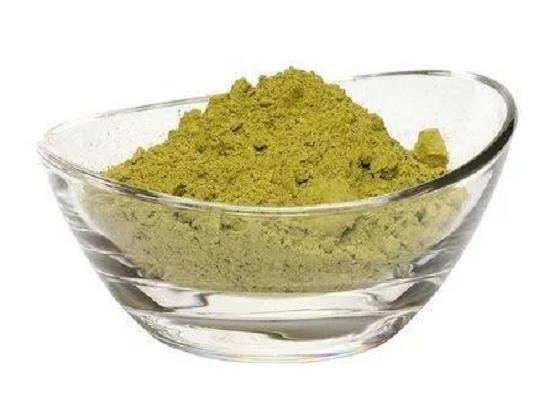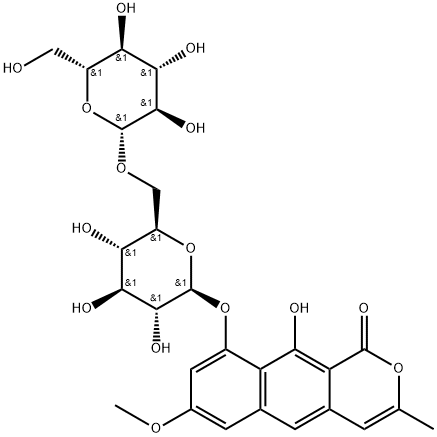Cassiaside C: origin, activities and applications
Nov 28,2023
General Description
Cassiaside C is a natural compound found in the seeds of Cassia obtusifolia, a plant commonly used in traditional Chinese medicine. It has been extensively researched for its pharmacological activities and has been shown to possess potent antioxidant and anti-inflammatory properties. These properties make it a promising candidate for use in the development of drugs, supplements, and skincare products. The diverse applications of Cassiaside C span the fields of health, wellness, and skincare, positioning it as a compound of interest for further research and development. In summary, Cassiaside C is a natural product with significant pharmacological activities and therapeutic potential, making it a compound of interest for various applications.

Figure 1. Cassiaside C
Origin
Cassiaside C is a natural compound that is found in the seeds of Cassia obtusifolia, a plant commonly used in traditional Chinese medicine. This compound has gained attention due to its potential health benefits, such as antioxidant and anti-inflammatory properties. Cassia obtusifolia is a member of the Fabaceae family and is native to tropical regions in Asia, including China, India, and Thailand. The plant is commonly referred to as Sicklepod or Java bean and has been used for centuries in traditional medicine to treat a variety of ailments, including constipation, hypertension, and skin conditions. Cassiaside C is a flavonoid glycoside and is one of the major components found in Cassia obtusifolia seeds. It has been shown to possess strong antioxidant activity, which can help protect cells from damage caused by free radicals. Additionally, cassiaside C has been found to have potent anti-inflammatory effects, which may be beneficial in treating inflammatory diseases such as arthritis. In summary, cassiaside C is a natural compound found in Cassia obtusifolia seeds with potential health benefits due to its antioxidant and anti-inflammatory properties. Its origin can be traced back to traditional Chinese medicine and the plant is native to tropical regions in Asia. 1
Activities
Cassiaside C has been extensively researched for its pharmacological activities. Numerous studies have demonstrated that C. obtusifolia L. and its major constituents, including Cassiaside C, possess a wide range of biological activities, such as antidiabetic, anti-inflammatory, antimicrobial, antioxidant, hepatoprotective, neuroprotective, immune-modulatory, anti-Parkinson’s disease, anti-Alzheimer’s disease, and larvicidal properties. The anthraquinones and naphthopyrones isolated from C. obtusifolia L. exhibit multiple pharmacological properties, suggesting that these compounds contribute to its therapeutic effects. Natural products are highly promising sources for antioxidant and anti-inflammatory agents, and C. obtusifolia L. has been shown to possess significant antioxidant and anti-inflammatory activities. The seeds of C. obtusifolia L. have been widely used in Chinese folk medicine to treat various ailments. In addition, Cassiaside C has become a valuable product for achieving chemical diversity in the molecules used for inflammation relief, particularly in treating eye inflammation, photophobia, and lacrimation. Researchers have investigated the mechanisms underlying the activities and effects of traditional Chinese medicines, including Cassiaside C, and have shown their potential as nutraceutical and therapeutic agents. In conclusion, Cassiaside C is a natural product with significant pharmacological activities and therapeutic potential. 2
Applications
Cassiaside C has shown promise in several potential applications due to its unique properties. Research suggests that Cassiaside C may have diverse health benefits, leading to its exploration in various fields. One of the key applications of Cassiaside C is its potential as an antioxidant agent. As a flavonoid glycoside, it exhibits strong antioxidant activity, which could be beneficial in protecting cells from oxidative stress and preventing related diseases. Furthermore, Cassiaside C has been investigated for its anti-inflammatory properties, indicating its possible use in the development of anti-inflammatory drugs or supplements. Its ability to modulate inflammatory responses may make it valuable in managing conditions characterized by chronic inflammation. In addition to its health-related applications, Cassiaside C may also have uses in skincare products and cosmetics due to its antioxidant and anti-inflammatory effects, potentially contributing to skin health and anti-aging effects. Overall, the diverse applications of Cassiaside C span the fields of health, wellness, and skincare, positioning it as a compound of interest for further research and development. 3
Reference
1. Ali MY, Park S, Chang M. Phytochemistry, Ethnopharmacological Uses, Biological Activities, and Therapeutic Applications of Cassia obtusifolia L.: A Comprehensive Review. Molecules. 2021 Oct 15;26(20):6252.
2. Zhang Y, Li L, Zhang J, Lin T, Jiang Y, Liu B. Screening of hypolipidemic active components in Jiang-Zhi-Ning and its preliminary mechanism research based on "active contribution value" study. J Ethnopharmacol. 2021 May 23;272:113926.
3. Xie Q, Guo FF, Zhou W. Protective effects of cassia seed ethanol extract against carbon tetrachloride-induced liver injury in mice. Acta Biochim Pol. 2012;59(2):265-270.
- Related articles
- Related Qustion
- 9-[(6-O-β-D-Glucopyranosyl-β-D-glucopyranosyl)oxy]-10-hydroxy-3-methyl-1H-naphtho[2,3-c]pyran-1-one—Cassiaside C Dec 18, 2019
Semen Cassiae (Cassia toraLinn) is a traditional Chinese herbal medicine, which is a rich source of flavones, polysaccharides and anthraquinone.
Antioxidant 412S is a white solid powder used to stabilize polymers, providing resistance to discoloration and enhancing durability.....
Nov 28,2023APICytidine is widely used in developing antiviral and antitumor drugs and is the starting material used to produce cytarabine, ancitabine, zalcitabine, and other related drugs.....
Nov 28,2023Biochemical EngineeringCassiaside C
119170-52-4You may like
- Toralactone 9-O-beta-D-gentiobioside
-

- $9.80 / 1KG
- 2020-01-10
- CAS:119170-52-4
- Min. Order: 1KG
- Purity: ≥98%
- Supply Ability: 20 tons
- Cassiaside C
-

- $100.00 / 100kg
- 2019-05-22
- CAS:119170-52-4
- Min. Order: 10kg
- Purity: 90%
- Supply Ability: 10tons




